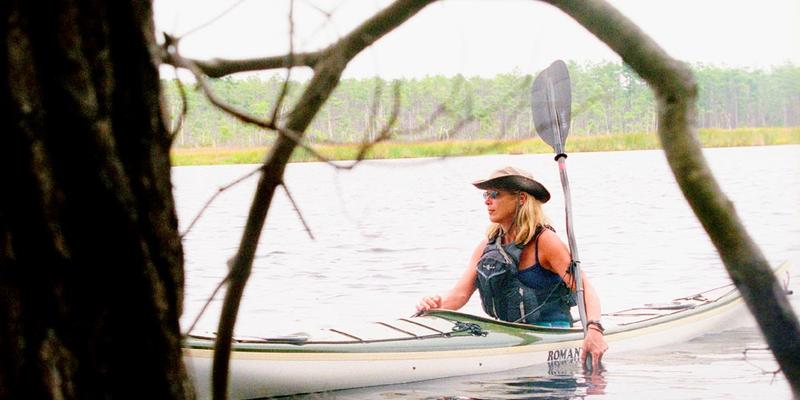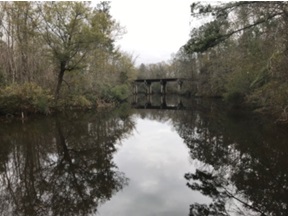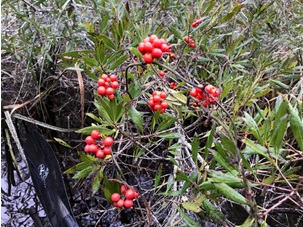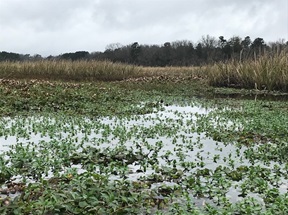
By Dr. Laura Murray, Ph.D.
We headed downstream, quietly paddling on this cloudy, but still, early winter day. The stillness allowed for clear, perfectly symmetrical, reflections of trees and other plants along the shoreline into the creek waters.
A drive through the Francis Marion National Forest from Mount Pleasant brought me to the Huger Recreation Area off of highway 402 and the boat landing from which we launched (for directions, site description and paddle times see: Earhart, R. Kayak Charleston: Trips Within 1 Hour of Charleston. p.74). An active train trestle adds to the charm of the picturesque setting. There is also an artisan well from which folks can fill their jugs with cool, delicious water.



Image Captions: Huger Creek Landing, Reflections, Coral Greenbrier
We headed downstream, quietly paddling on this cloudy, but still, early winter day. The stillness allowed for clear, perfectly symmetrical, reflections of trees and other plants along the shoreline into the creek waters. Many of the plants, like the southern wild rice (Zizania aquatica), bald cypress (Taxodium distichum), and swamp rose (Rosa palustris) had senescenced into their winter state, but here and there were still bright spots, a splash of color, such as the coral greenbrier (Smilax walteri).
Shortly, we passed Kensington Plantation, a former rice plantation with 1683 as its earliest known date of existence. Much of the plantation is currently under conservation easement, preserving the land for future generations to enjoy. Evidence of past rice culture is prevalent along the creek with berm fringed impoundments and “trunks” for water level control. Today, many of these former rice “fields” are still manages as freshwater ponds for wildlife habitat.


Image Captions: Water Hyacinth, Carex; a pop of color
Some would say that winter paddling is not very exciting as many plants and animals “sleep” during the cold season. I find paddling during the cooler months relaxing and peaceful.
As the creek widened past its confluence with Quenby Creek to form the East Cooper River, we encountered beds of floating plants and upon close inspection there appeared to be two separate species: the non-native water hyacinth (Eichhorina crassipes) with dark roots and bulbous leaf stalks, and the native frog’s bit (Limnobium spongia) lacking bulbous stems and with light colored roots. At times these plant beds covered large areas of the creek, while in other places, there were only fringes of the plants near the creek bank. I couldn’t help wonder if the distribution of floating plants correlates to water movement. Since these plants are not rooted to the bottom, perhaps they congregate in still water, but are washed away in fast moving currents.
Some would say that winter paddling is not very exciting as many plants and animals “sleep” during the cold season. I find paddling during the cooler months relaxing and peaceful. For one, there are fewer folks out on the water the pops of color seem to stand out more prominently against the grey-brown background (such as the grass like Carex sp. growing on tree roots).